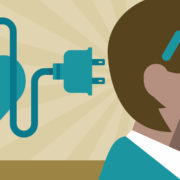The Basics of Nonverbal Communication (Part Two)
There are many recruiters who decide whether or not a candidate is worthy due to their body language while they waiting in the lobby or walking towards the conference room where the interview takes place.
It is common knowledge that the recruitment process and employee turnover represent challenges in today’s global environment. There are many cases when nonverbal communication is more revealing than what a candidate says their previous experience or their references. It is that vital. Recruiters will pay close attention to a candidate’s nonverbal communication.
As a recruiter, your focus points are the signals regarding the candidate’s attitude, interests, hobbies, outlook and approach. As actions speak louder than words, so do nonverbal signals during an interview, due to the fact that an employer can determine a candidate’s references in regards to: the necessary skills to perform well at the job, cultural fit in the organisation and behavioural characteristics that may determine how successful a candidate is for the job.
Here are a few examples in which recruiters are as observant as possible in terms of nonverbal communication:
First Impressions
The first minutes of an interview are very important so much so that almost nothing else matters. Recruiters take a look at the candidate and note all of the nonverbal messages they are exhibiting. They form impressions ranging from a candidate’s posture, handshake, outfit, attentiveness, facial expressions and eye contact.
Handshake
Notice whether the candidate displays a firm and solid handshake. A confident, comfortable person uses the handshake as a positive nonverbal interaction. The handshake should assure the employer of the candidate’s desire for a positive first interaction and impression. Consequently, a limp handshake reveals low confidence and self-esteem. Last but not least, an excessively strong handshake tells the recruiter the candidate is overly aggressive or even trying to steamroll him or her.
Posture and Space Usage
If the candidate is sitting comfortably and upright in his chair that means he’s most likely confident and comfortable with whom he or she is. If their posture is slouchy it may very well mean that they do sloppy work and have a low self-esteem. In general, posture which allows the individual to use an appropriate amount of space in the room reveals the security the applicant holds in his or hers abilities.
Clothing and general appearance
No matter how formal or informal the work environment is, it is adamant for a job applicant to wear a suit to the meeting. The accessories that accompany the candidate are equally important. If they show up with a briefcase, shined shoes, a leather-bound portfolio and so on, demonstrates the professionalism that lies within that person. It also reveals the fact that they wanted to make a proper first impression.
If the candidate sought out to look professional for the interview and it did not happen chances are that is as good as it’s ever going to get. In this scenario, the recruiter has to decide whether that person is a good fit for the company and hope at a change for the better in the near future.
Facial Expressions and Body Language
Nothing says more about a candidate than their facial expressions and body language.
Numerous books and research has been done on the science of facial expressions and body language. The key here is to discover whether a person’s facial expressions and body language match the words that are being said.
Facial expressions that do not match the spoken words clearly indicate discomfort or lying and these are not desired traits in any candidate. There are candidates who never make eye contact and stare at a spot behind the employer’s shoulder. This exhibits that they are uncomfortable and show a serious lack of confidence. Consistency between facial expressions and the words spoken is crucial.
Body language is similarly important. If the job applicant is leaning back in his seat and has his legs crossed, he’s too relaxed for an interview setting and may deal with costumers the same way. If they have occupied the entire table with their arms and various accessories, that displays aggressiveness and may turn out to be a difficult employee to manage after being hired. Another good example is, if during a statement, the candidate looks away from the recruiter or is generally nervous, then he or she is probably not telling the truth. If candidates practically stare into the employer’s eyes as they’re talking that most likely means that what they are saying is 100% fabricated.
It is always going to be difficult to tell whether a candidate is being truthful or not, but the key here is “listen” carefully at what they are not saying.
Finding the right talent, the best fit for the job and your organisation, can be a very challenging task. It requires deep knowledge of your own organisation’s culture and keen understanding of the candidate’s personality, strengths, interests, work style and other characteristics. Our technology and solutions will do the work for you, helping you find employees who can flourish and reach the highest performance required to constantly bring your company forward.
Request a free demo:
Sources:
https://www.thebalance.com/nonverbal-communication-in-the-workplace-1918470
https://www.thebalance.com/how-to-use-nonverbal-communication-in-hiring-1919137
http://yourbusiness.azcentral.com/nonverbal-communications-important-manager-17543.html












